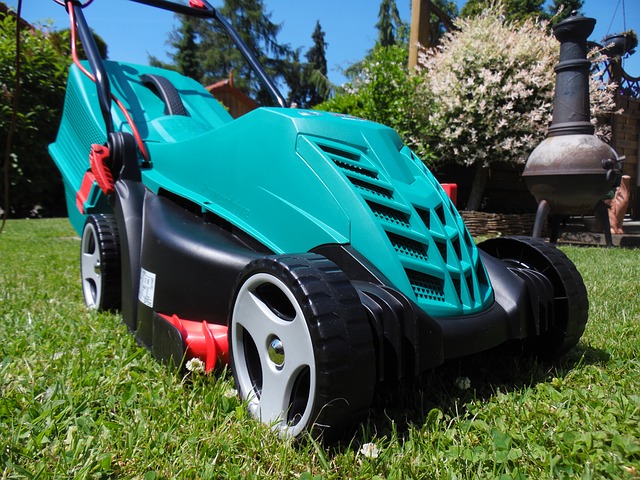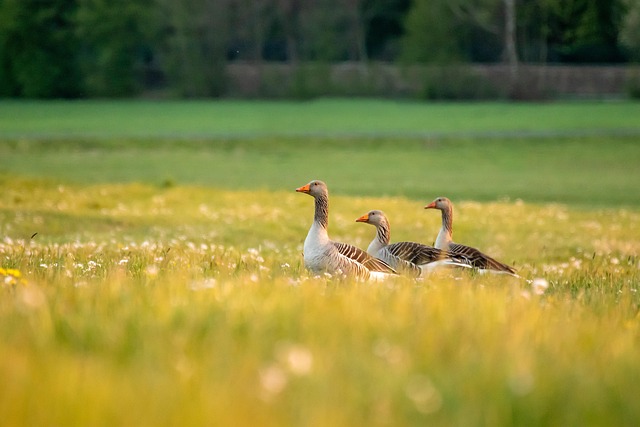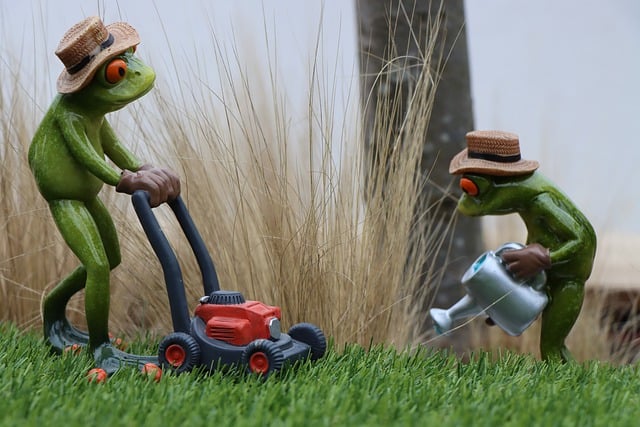Seasonal Lawn Care and Landscaping are vital for maintaining outdoor spaces' health and aesthetics. These practices include debris removal, weed control, pest prevention, and seasonal bed preparation. Spring cleans up winter debris, summer maintains weed-free areas, autumn rakes leaves, and winter removes dead plant material to prevent disease. Lawn Care and Landscaping professionals assess yards, prepare soil, apply treatments, and provide ongoing maintenance for vibrant, healthy landscapes all year round, with specific winter preparations like leaf removal, branch trimming, fertilization, aeration, and organic mulching.
Looking to keep your yard in top shape year-round? Seasonal yard cleanups are essential for lawn care and landscaping, offering numerous benefits from improved aesthetics to better health. This guide delves into the optimal timing for these tasks and provides a step-by-step process for effective lawn care and landscaping. Learn how to prepare your yard for winter with expert tips and best practices, ensuring your outdoor space remains vibrant and healthy throughout every season.
- Understanding Seasonal Yard Cleanups: Benefits and Timing
- The Lawn Care and Landscaping Process: Step-by-Step Guide
- Prepare Your Yard for Winter: Tips and Best Practices
Understanding Seasonal Yard Cleanups: Benefits and Timing

Seasonal yard cleanups are essential practices in lawn care and landscaping, offering numerous benefits tailored to different times of the year. These cleanups not only enhance the aesthetic appeal of your outdoor space but also contribute to its overall health and longevity. Spring, for instance, marks the perfect time to remove winter debris like dead leaves and branches, allowing fresh air and sunlight to nourish the lawn and plants.
Timing is crucial; each season presents unique challenges and opportunities. In summer, regular cleanups help control weeds and prevent pest infestations. Autumn cleanup involves raking up fallen leaves to avoid smothering grass and preparing beds for winter. Winter may seem like a dormant period, but removing dead plant material prevents the spread of diseases and pests, ensuring a healthier yard come spring. These strategic interventions are vital for maintaining a vibrant, healthy landscape throughout all seasons.
The Lawn Care and Landscaping Process: Step-by-Step Guide

The process of lawn care and landscaping transforms outdoor spaces into vibrant oases, enhancing property values and promoting a healthier environment. It begins with an initial assessment, where professionals inspect the yard to understand its current state, identify issues like weeds, pest infestations, or damaged grass, and discuss client expectations. This step is crucial as it forms the basis for creating a tailored plan.
The next phase involves preparation, which may include removing debris, trimming overgrown plants, and aerating compacted soil. Once ready, landscaping experts apply fertilizers, pesticides, or herbicides to address specific problems. Seeding or sodding follows to restore or enhance grass coverage. Regular maintenance like mowing, edging, and watering ensures the lawn remains healthy and aesthetically pleasing throughout different seasons. This meticulous process requires expertise and a deep understanding of local climates and vegetation for optimal results in lawn care and landscaping.
Prepare Your Yard for Winter: Tips and Best Practices

As winter approaches, preparing your yard is essential for maintaining its health and aesthetics. This seasonal cleanup process involves several key steps to ensure your lawn and landscaping thrive during the colder months. Start by removing all fallen leaves and debris to prevent matting and smothering grass. A clean yard allows better air circulation, which is crucial for root development. Next, trim back overgrown branches and hedges, shaping them for a neat appearance. This not only enhances the curb appeal but also reduces potential damage from winter storms.
In terms of lawn care and landscaping, preparing for winter includes fertilizing to promote strong grass growth in the spring. Choose a winter-specific fertilizer to ensure your lawn receives the necessary nutrients. Additionally, aerate compacted soil to improve drainage and oxygen levels, benefiting root structures. Consider adding a layer of organic mulch around plants and trees to insulate them from extreme temperatures and protect against frost damage. These practices contribute to a robust and vibrant yard come spring, showcasing professional lawn care and landscaping services.
Seasonal yard cleanups are essential practices for maintaining a healthy and aesthetically pleasing lawn. By understanding the benefits and optimal timing, as outlined in this article, you can effectively prepare your yard for each season. Following the step-by-step guide provided ensures a systematic approach to lawn care and landscaping, allowing you to create a vibrant outdoor space that thrives throughout the year. Implement these practices to ensure your yard is winter-ready, securing its beauty and value for seasons to come.
